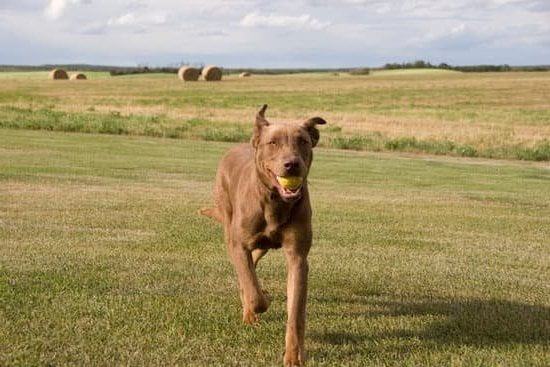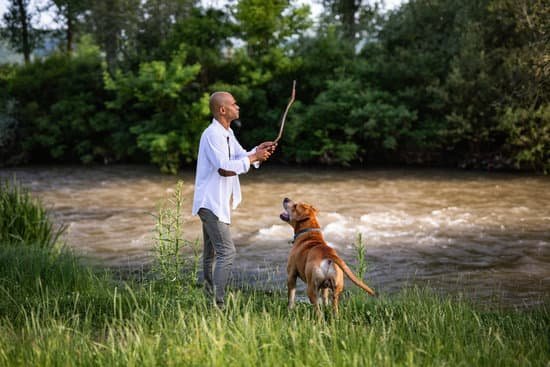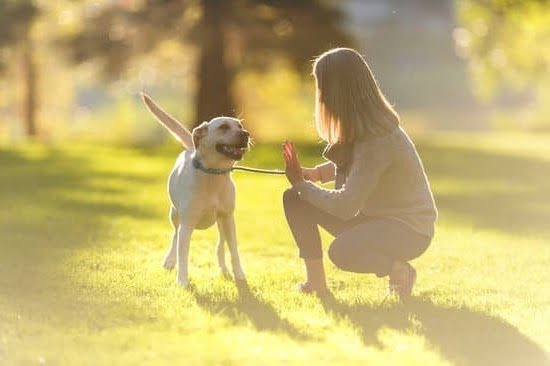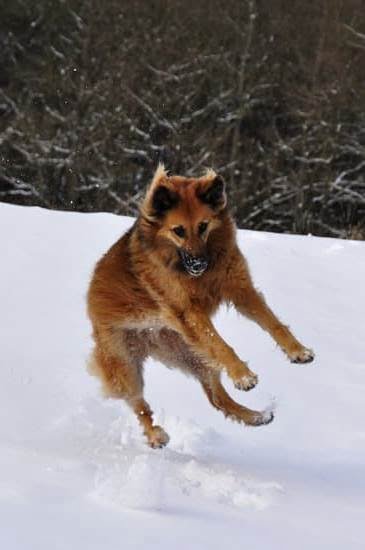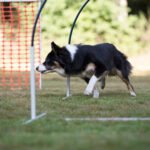Potty training a rescue dog can be a challenging endeavor, as these dogs may have experienced trauma or neglect in their past. It is important to understand the unique challenges that come with potty training a rescue dog and approach the process with patience and empathy.
When potty training a rescue dog, it is crucial to assess the dog’s background and consider any factors that may impact their ability to learn. Understanding the dog’s history can help tailor a training approach that takes into account any past trauma or neglect that may affect their behavior.
Establishing a routine is key in potty training any dog, but it is especially important when dealing with a rescue dog. Consistency and structure can help alleviate anxiety and uncertainty, creating an environment where the dog feels safe to learn and thrive.
Assessing the Dog’s Background
Assessing a rescue dog’s background before starting potty training is essential in understanding their behavior and needs. Many rescue dogs come from unknown or traumatic experiences, which can affect their ability to adapt to new routines and environments. Factors such as the dog’s age, previous living conditions, and any history of abuse or neglect can all play a role in how they approach potty training.
It is important to gather as much information as possible about the rescue dog’s background. This could include talking to the organization or individual from whom the dog was adopted, as well as observing the dog’s behavior and reactions in different situations. Understanding any fear or anxiety triggers that may be present can help tailor a potty training plan that takes these factors into account.
Some rescue dogs may have never been properly potty trained, while others may have had some level of training but regressed due to their circumstances. By assessing the dog’s background, owners can have a better understanding of what challenges they may face during the potty training process and how best to address them.
Additionally, taking into consideration any special needs or health concerns can also help ensure a successful potty training experience for both the owner and the rescue dog.
Establishing a Routine
Consistency Is Key
Consistency is crucial when it comes to potty training a rescue dog. Dogs, especially rescues, thrive on routine and predictability. Establishing a consistent schedule for feeding, walking, and bathroom breaks can make the potty training process much smoother.
Creating a Schedule
Creating a schedule for your rescue dog will help them understand when it’s time to go outside to do their business. Take note of the times when your dog typically needs to eliminate and plan regular bathroom breaks around those times. Stick to the schedule as much as possible, even on weekends or days off work.
Using Positive Reinforcement
When establishing a routine for potty training, it’s important to use positive reinforcement. When your rescue dog successfully goes outside, praise and reward them with treats or verbal praise. This positive association will encourage them to continue going outside instead of inside the house. Avoid punishment for accidents, as this can create fear and anxiety in your dog.
By establishing a consistent routine, using positive reinforcement, and creating a schedule for your rescue dog, you can effectively potty train them while building trust and strengthening your bond. Remember to be patient and persistent, as every dog learns at their own pace.
Choosing the Right Training Method
When it comes to potty training a rescue dog, choosing the right training method is crucial for their success. One of the most debated aspects of dog training is whether to use positive reinforcement or punishment. Positive reinforcement involves rewarding your dog for good behavior, while punishment involves reprimanding your dog for bad behavior.
Using positive reinforcement is often recommended by animal behavior experts as the most effective and humane way to train a rescue dog. This method involves praising and rewarding your dog when they eliminate in the designated potty area, which helps them associate going to the bathroom in the right spot with a positive experience. Punishment, on the other hand, can create fear and anxiety in dogs, leading to potential behavioral issues.
Studies have shown that using positive reinforcement not only leads to faster and more effective potty training, but it also strengthens the bond between you and your rescue dog. By focusing on rewards such as treats, praise, and playtime instead of punishment, you can create a more positive learning environment for your furry friend.
| Training Method | Effectiveness |
|---|---|
| Positive Reinforcement | Faster and more effective potty training; strengthens bond with dog |
| Punishment | Can create fear and anxiety; potential behavioral issues |
Creating a Designated Potty Area
When potty training a rescue dog, one of the key elements to success is creating a designated potty area. This not only helps in establishing a routine for the dog but also makes it easier for them to understand where they should relieve themselves. Here are some tips for setting up a successful bathroom spot for your rescue dog:
- Choose an appropriate outdoor location: Select a specific area in your yard or near your home that will serve as the designated potty spot for your rescue dog. Make sure it’s easily accessible and that your dog feels comfortable using it.
- Use visual markers: To help your rescue dog identify the potty area, consider using visual markers such as a stake with a flag or a specific type of ground covering like gravel or mulch. This will provide a clear signal to your dog that this is the spot where they should go potty.
- Establish a consistent routine: Take your rescue dog to the designated potty area at regular intervals throughout the day, especially after meals, playtime, and waking up from naps. Consistency is key in helping them understand where they should do their business.
By following these tips and taking the time to establish a designated potty area, you can set your rescue dog up for success in their potty training journey. Remember to be patient and consistent as you work with your dog to establish this important routine. With time and positive reinforcement, you’ll likely see progress in their understanding of where they should go potty.
Managing Accidents
Accidents are an inevitable part of potty training a rescue dog, and it’s important to handle setbacks with patience and positivity. Here are some tips for managing accidents during the potty training process:
1. Stay Calm: When accidents happen, it’s important to stay calm and avoid reacting negatively. Yelling or scolding the dog can create fear or anxiety, making it harder for them to understand what is expected of them.
2. Clean Thoroughly: Accidents should be cleaned up thoroughly using an enzymatic cleaner to eliminate any lingering odors that may attract the dog back to the same spot. This will also help prevent repeat accidents in the same location.
3. Reassess the Routine: If accidents are happening frequently, it may be necessary to reassess the potty training routine. Consider whether the schedule is consistent enough, if there are any changes in the environment causing stress, or if there are any medical issues that need to be addressed.
It’s important to remember that accidents are a natural part of the potty training process, especially when dealing with a rescue dog that may have experienced trauma or neglect in the past. By approaching setbacks with patience and positivity, you can help your dog learn and progress in their potty training journey.
The Role of Exercise and Diet
Potty training a rescue dog can be a challenging task, and it’s important to consider all factors that may affect the process. In addition to establishing a routine and choosing the right training method, it’s crucial to recognize the impact of exercise and diet on potty training. Physical activity and nutrition play a significant role in a dog’s ability to control their bladder and bowel movements.
The Importance of Exercise
Regular exercise is essential for maintaining a rescue dog’s overall health and wellbeing. When it comes to potty training, sufficient physical activity can help regulate their bathroom habits. By engaging in daily walks, playtime, and other forms of exercise, dogs are more likely to develop a regular bathroom schedule. Additionally, physical activity can help reduce anxiety and stress, which are common factors that may contribute to accidents in the house.
The Influence of Diet
A balanced diet is another crucial aspect of potty training for rescue dogs. Ensuring that your dog is consuming proper nutrition can aid in digestion and promote healthy bowel movements. It’s important to establish a consistent feeding schedule and provide high-quality food that meets their dietary needs. Avoiding table scraps and monitoring treat intake can also positively impact their bathroom habits.
Considering the role of exercise and diet in potty training a rescue dog underscores the significance of providing them with the necessary tools for success. By incorporating regular physical activity and maintaining a healthy diet, pet owners can set the stage for effective potty training while supporting their furry friend’s overall well-being during this transition period.
Seeking Professional Help
When it comes to potty training a rescue dog, some pet owners may find themselves in need of professional assistance to help effectively train their furry companions. While some dogs may respond well to at-home training methods, others may require the expertise of a professional trainer to overcome challenges and achieve success in potty training.
One scenario in which pet owners should consider hiring a trainer for potty training assistance is if they have tried various methods without success. Some rescue dogs may have specific behavioral issues or trauma from their past that require the expert guidance of a professional dog trainer. These trainers have the knowledge and experience to assess the unique needs of each dog and develop a tailored training plan to address any underlying issues related to potty training.
Another consideration when seeking professional help for potty training is if the pet owner does not have the time or resources to commit to consistent training efforts. A professional dog trainer can provide the necessary support and guidance, taking some of the responsibilities off the pet owner’s plate. With their expertise, trainers can work closely with both the rescue dog and its owner to develop and implement effective potty training strategies.
Lastly, if a rescue dog has exhibited severe anxiety or fear-based behaviors related to potty training, seeking out a professional trainer is highly recommended. These trainers can utilize behavior modification techniques and desensitization methods to help ease the dog’s anxieties and fears associated with potty training, ultimately leading to better outcomes for both the pet and their owner.
In such cases, investing in professional help can make all the difference in achieving successful potty training for a rescue dog.
Celebrating Success
In conclusion, potty training a rescue dog can be a challenging but rewarding experience. By understanding the challenges of potty training a rescue dog and assessing the dog’s background, you can set yourself up for success. Establishing a routine and choosing the right training method are crucial aspects of successful potty training. Consistency and positive reinforcement are key in this process.
Creating a designated potty area and managing accidents with patience are also important components of effective potty training. Additionally, consider the role of exercise and diet in your dog’s potty training journey. Seeking professional help when necessary can also make a significant difference in the success of potty training a rescue dog.
Finally, celebrating the successes, no matter how small, is essential in recognizing and rewarding your dog’s progress in potty training. This positive reinforcement will reinforce good behavior and encourage your rescue dog along their journey to becoming fully trained. Potty training a rescue dog may take time and patience, but with dedication and consistency, it is certainly possible to achieve success.
Frequently Asked Questions
How Long Does It Take to Potty Train a Rescue Dog?
Potty training a rescue dog can vary in time depending on the individual dog’s temperament, age, and previous experiences. It may take anywhere from a few weeks to a few months for them to fully adapt to potty training.
Are Shelter Dogs Harder to Potty Train?
Shelter dogs may be harder to potty train due to their previous living conditions and experiences. They may have developed habits or fears that need to be addressed during the training process, requiring more patience and understanding from the owner.
How Do I Stop My Rescue Dog From Peeing and Pooping in the House?
To stop a rescue dog from peeing and pooping in the house, it’s important to establish a consistent routine for potty breaks, provide positive reinforcement for outdoor elimination, clean indoor accidents thoroughly, and address any potential underlying medical or behavioral issues with the help of a professional trainer or veterinarian.

Welcome to the blog! I am a professional dog trainer and have been working with dogs for many years. In this blog, I will be discussing various topics related to dog training, including tips, tricks, and advice. I hope you find this information helpful and informative. Thanks for reading!

